Artist challenges notions of authenticity, re-creating Western grocery items that ‘feel’ Asian
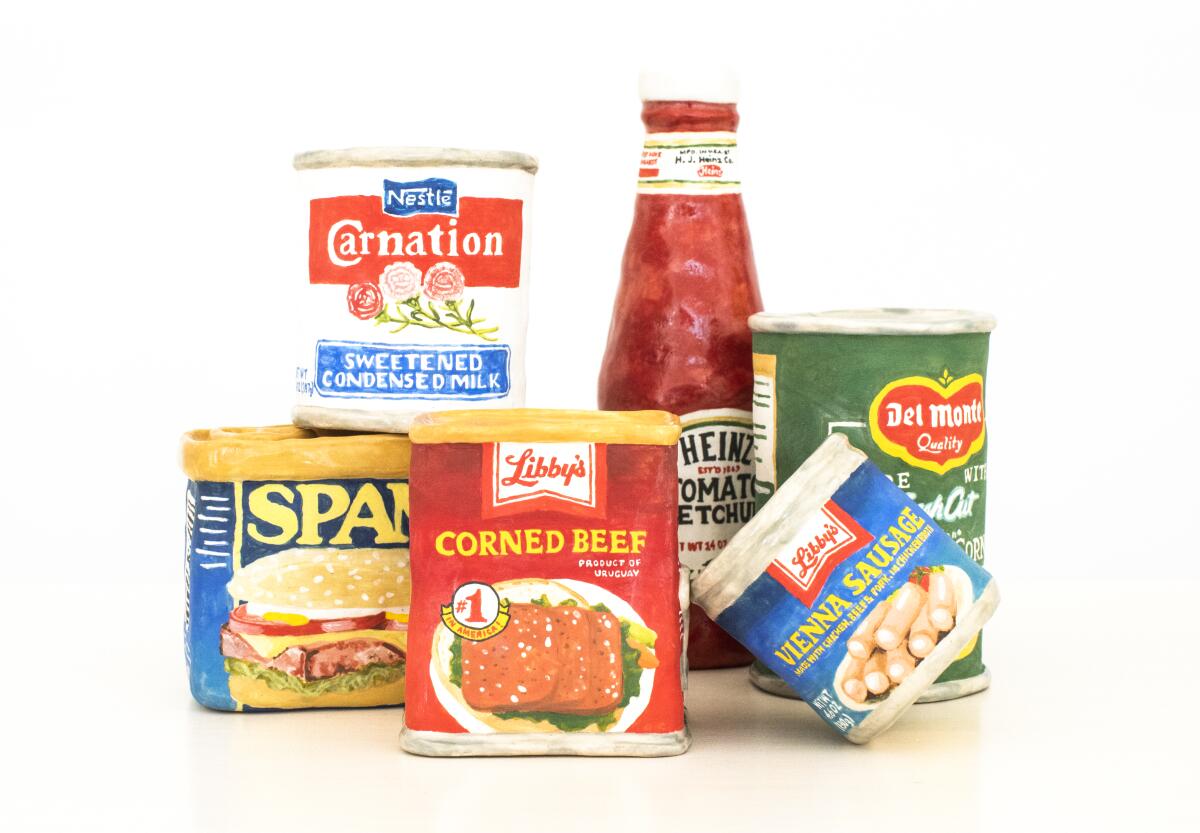
- Share via
Before Brooklyn-based ceramic artist Stephanie H. Shih sculpted clay pieces for her first solo exhibition in Los Angeles — currently on display in Chinatown’s Stanley’s gallery — she crowdsourced ideas from her 20,000-plus social media followers.
As a way to paint a broader picture of the East and Southeast Asian diasporas that were beyond her own experiences as a Taiwanese American, she asked her followers what common Western grocery items “felt” Asian to them. Shih was surprised and touched by people‘s eagerness to share their stories.
Groceries are very personal, said Shih, who is 34. “We bring them into our homes, and we feed ourselves and our loved ones with them. So, this food feels very, very personal to people.”
Shih’s “New World Mall” exhibition is a collection of 30 life-size ceramic and hand-painted replicas of these nostalgic products. (The show’s name is a reference to a shopping center in Flushing’s Chinatown in New York City.) There’s a Carnation Sweetened Condensed Milk tin, a nod to its use in Vietnamese coffee and Hong Kong-style toast. A ceramic Libby’s Vienna Sausage can represents its role in Filipino meatloaf and Korean budae-jjigae (“army stew”). And a bottle of Heinz ketchup stands in as an essential ingredient for Japanese spaghetti.
The seed of the idea for “New World Mall” stemmed from a previous group show, “Making in Between: Contemporary Chinese-American Ceramics,” at the American Museum of Ceramic Art in Pomona that Shih participated in last year. (One of her featured sculptures was a can of Spam, which is part of her new show.) Her work caught the attention of Sebastian Gladstone, the director of the Chinatown art gallery.
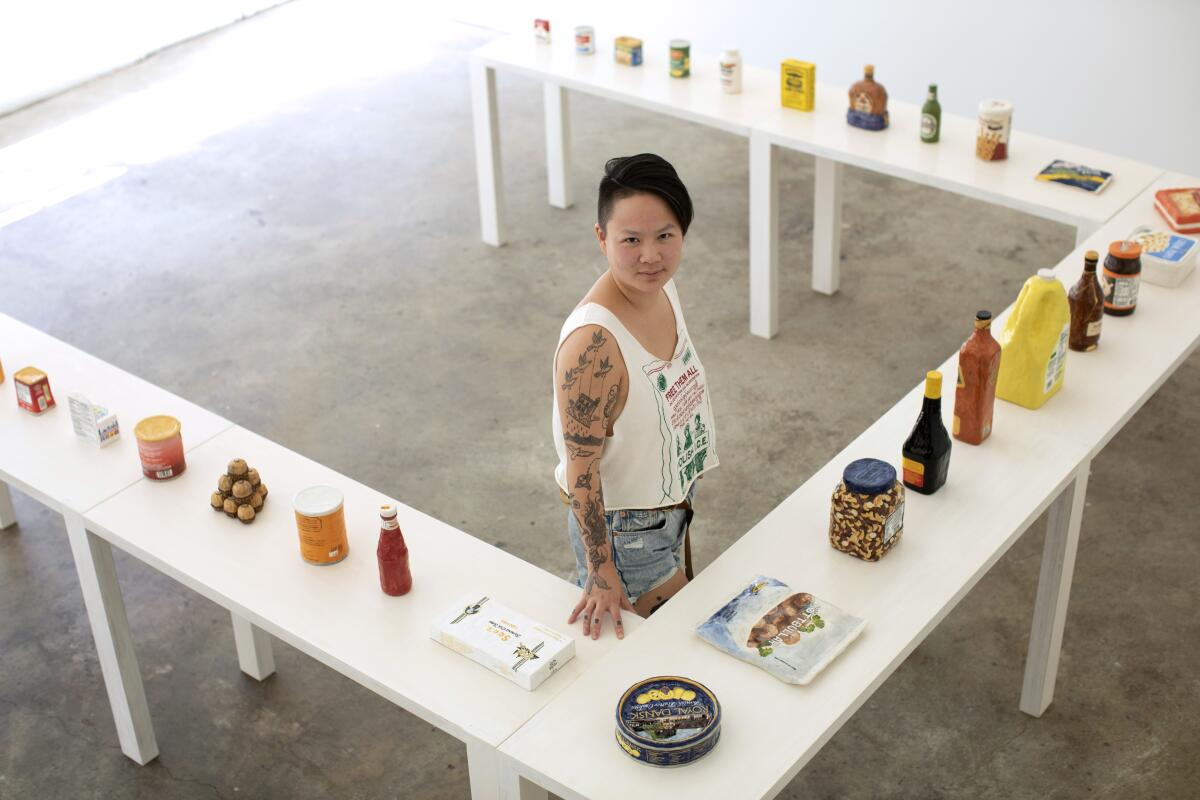
“There was this real intimacy to these handmade objects that I thought was fantastic,” Gladstone said.
He reached out to Shih last December, and she started working on the pieces that touch upon the ideas of migration and colonization. Except for the Spam and Ferrero Rocher chocolates, everything was made specifically for this new exhibition. The collection includes a blue Royal Dansk cookie tin, a bottle of Maggi seasoning and a bag of King’s Hawaiian sweet rolls.
Shih questions the idea of authenticity when it comes to certain foods. As an example, she said, many people consider banh mi to be Vietnamese, even though its creation was a byproduct of French occupation and the introduction of baguettes and pâté to the country.
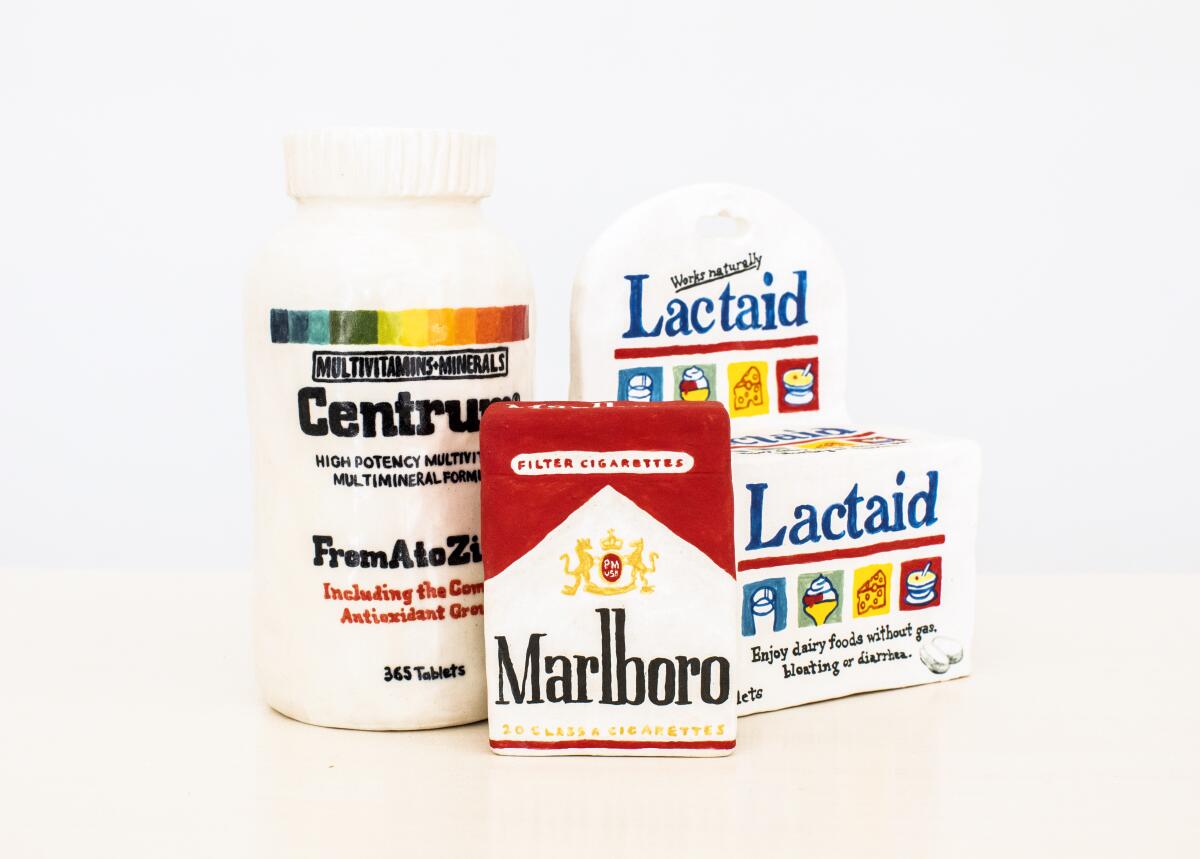
“There’s all this discourse around how American Chinese food isn’t authentic, but I actually think that’s really inaccurate and an almost dangerous way to think about what culture is,” Shih said. “Culture isn’t static. It’s ever moving. And so, with this series, I really wanted to make a statement that these Western products, which we have incorporated into our cuisines, are authentically part of our cultures as well.”
Shih does a lot of research before she creates her artworks. She prefers replicating older versions of product labels, ideally from the 1980s or 1990s when there was a big wave of East Asian immigration to the United States. (Her parents left Taiwan in the early 1980s to attend graduate school in Philadelphia, where Shih was born.) She spends hours searching Google Images and old commercials on YouTube to get the details right. For this series, she even bought a 1990s Ovaltine canister from eBay. It was still half-full of the original chocolate milk powder.
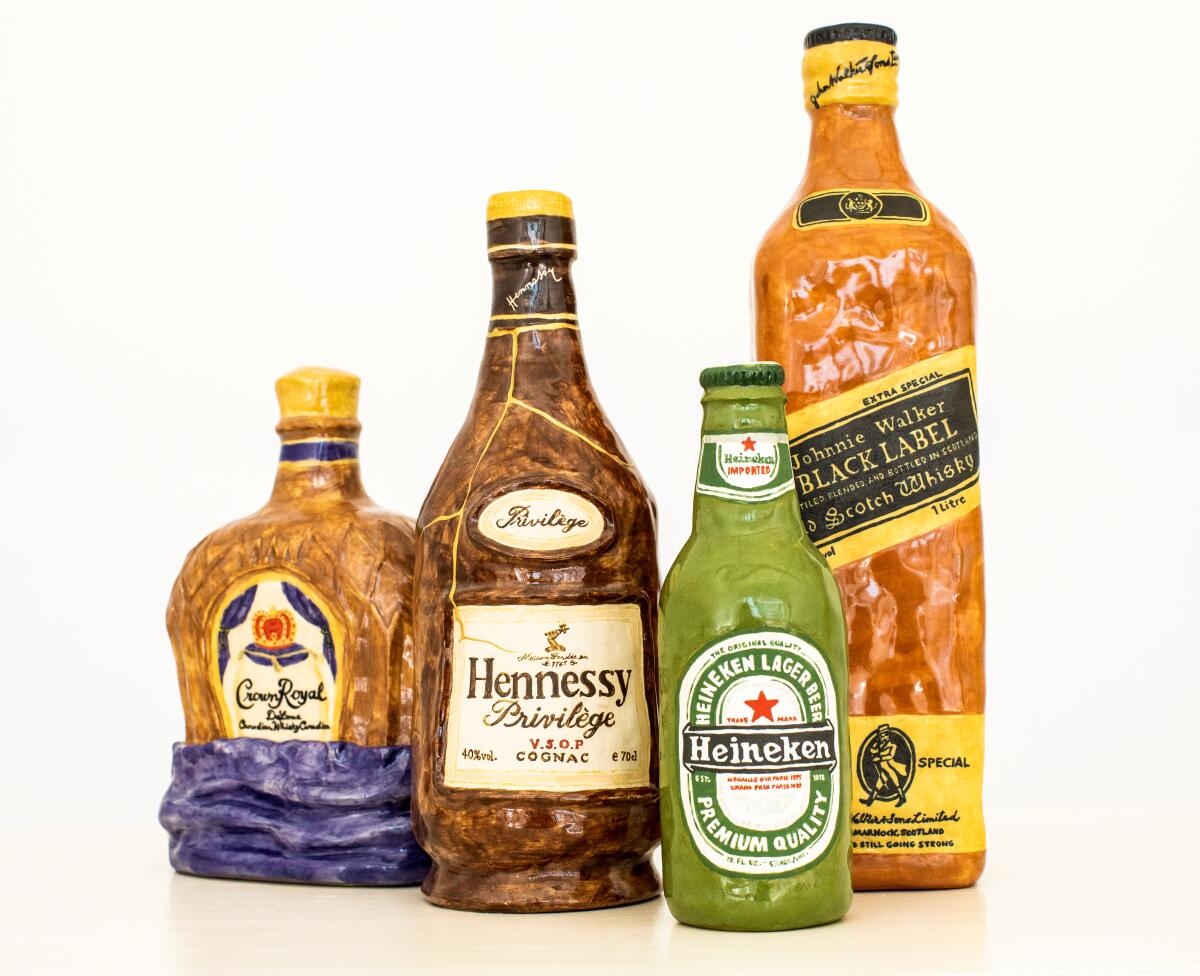
After Shih sculpts one of her clay pieces, she paints it with meticulous detail using underglaze before its first firing in the kiln. The next round of glaze depends on the material — glass or paper or metal, for example — used in the original product. If there’s a paper label, she’ll skip the second glaze for that part of the sculpture. The appearance of glass is replicated through a high-gloss finish, while plastic and metal lids have a glaze with a lower sheen. Then she fires the artwork in the kiln again.
At Stanley’s, her 30 sculptures are presented together on a U-shaped table, taking up a small amount of space in the 1,200-square-foot gallery.
“I love the idea of this really subtle, small body of work that you’ll get really intimate with in this large space,” Gladstone said. “Big statements can come in very small packages.”
Shih took a nonlinear path to her art career. Growing up in Princeton Junction, N.J., she always had an interest in the arts, specifically in printmaking, photography and oil pastels. In high school, she took a ceramics class, where she said she “made bad bowls and pretty embarrassing sculptures of naked women.”
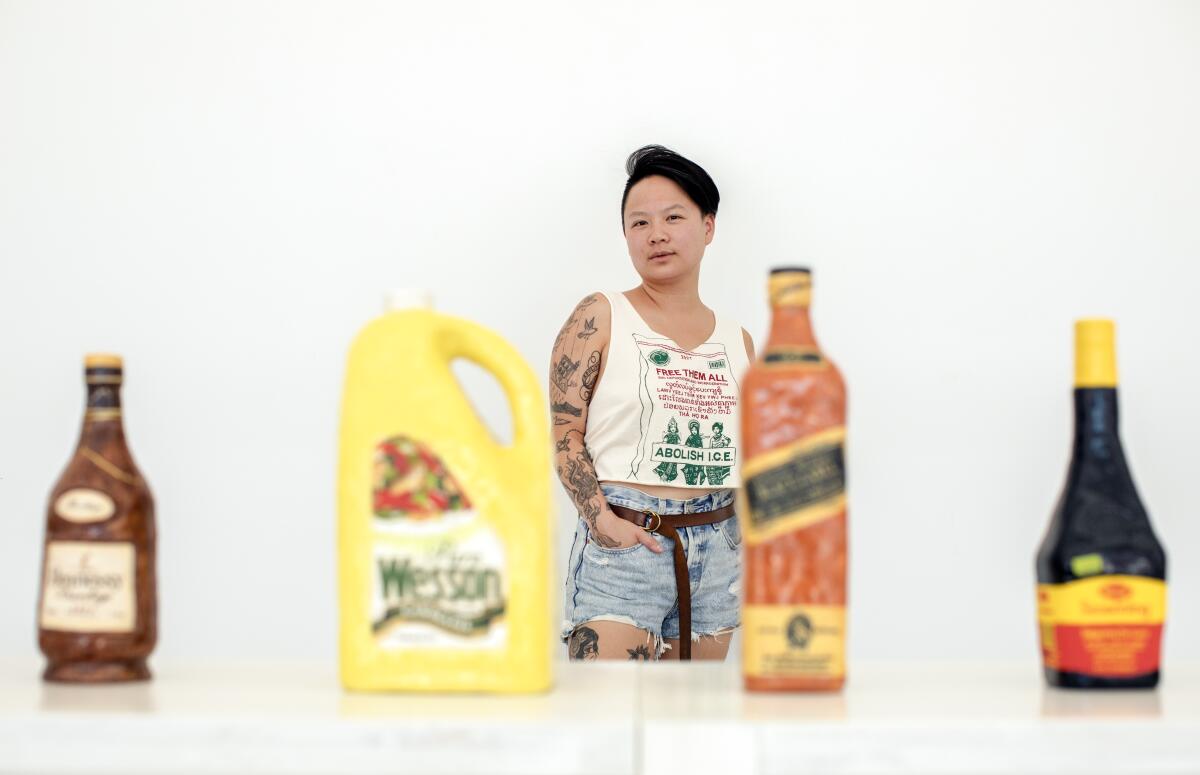
Shih wanted to go to art school but her parents didn’t approve of it. She attended Boston University and then ended up working as a copywriter and creative director at tech companies for a decade.
In 2015, she picked up ceramics again as a form of art therapy to manage her chronic back pain. One of her first pieces to garner notice consisted of ceramic dumplings. In 2018, after she created her first product replica, a Chinkiang black vinegar bottle, she was inspired to do a series of grocery items. For the last couple of years, Shih, who’s had other solo exhibitions featuring grocery items at the Perrotin gallery in New York and Wieden+Kennedy gallery in Portland, Ore., makes her living mostly through her artwork.
There’s a sense of home and belonging in Shih’s artwork that extends to her activism in supporting marginalized communities through fundraisers. This year, she raised $45,000 for Asian immigrants who have been fighting deportation by U.S. Immigration and Customs Enforcement.
As anti-Asian racism and hate crimes have increased in recent months, Shih said she believes the Asian American diaspora is going through a big moment of growth, and she hopes to see it continue.
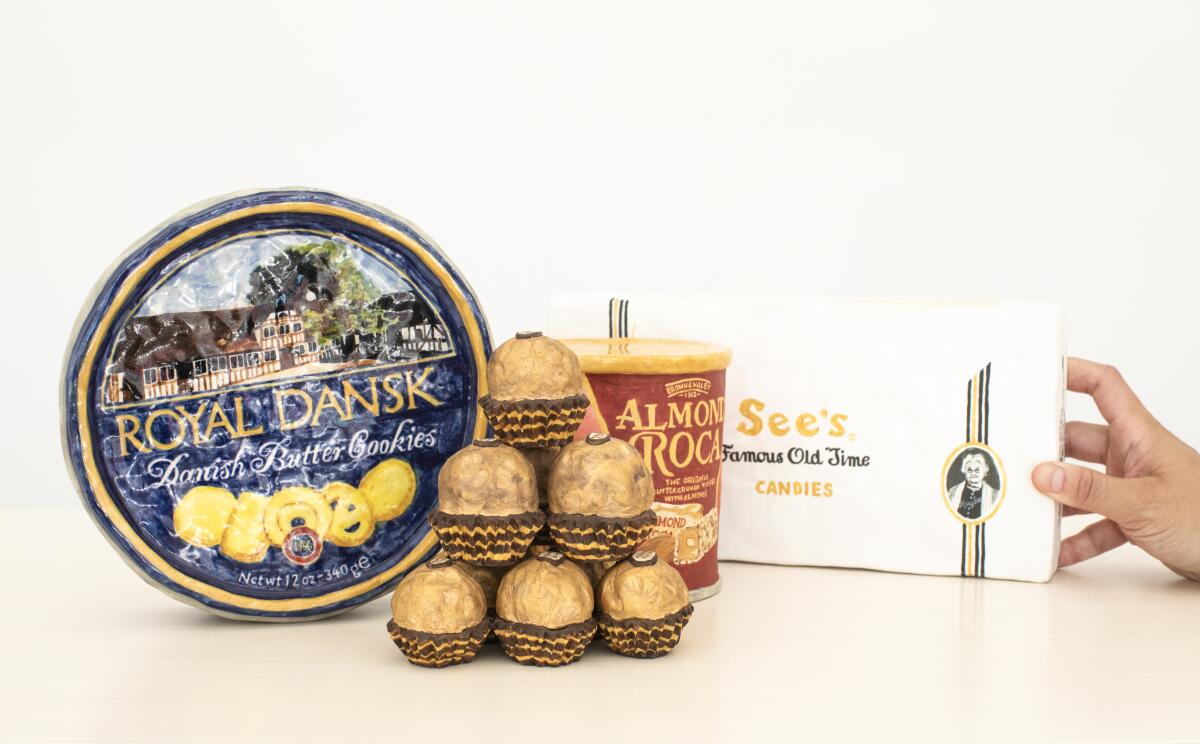
“The current discourse around Asian American identity is focused on representation and authenticity, both of which can be interesting topics,” Shih said. “It’s exciting to watch my peers take more interest in our power as a unified bloc.
“I hope we can progress beyond these issues and onto political projects that will actually bring us equity and safety, like healthcare for all, workers’ rights and ending deportation,” she added. “So I’m feeling a bit antsy but overall I’m hopeful about what this moment could bring.”
“New World Mall” runs through Sept. 3 at Stanley’s, 944 Chung King Road, Los Angeles, stanleyshouse.com
More to Read
Eat your way across L.A.
Get our weekly Tasting Notes newsletter for reviews, news and more.
You may occasionally receive promotional content from the Los Angeles Times.










